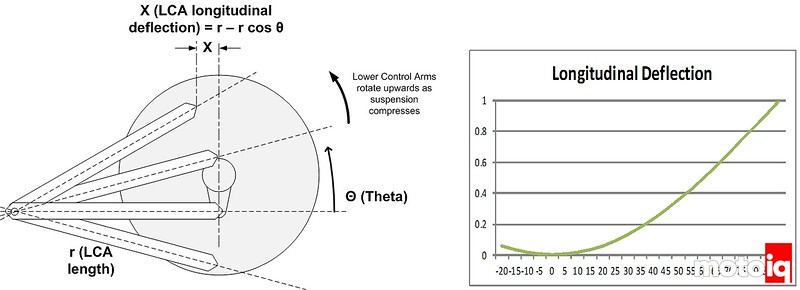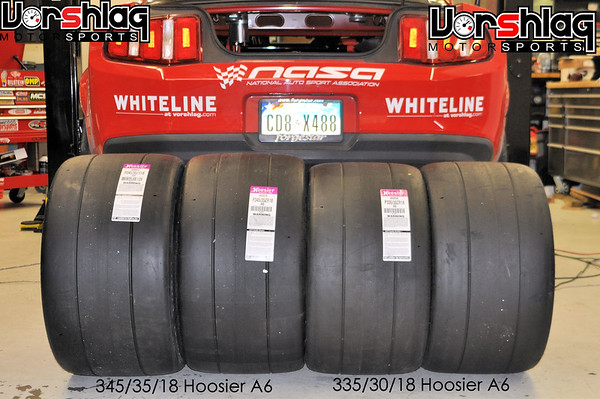Norm Peterson
corner barstool sitter
You'd only be installing relo brackets on a car that's intentionally being tweaked for better corner carving (what the 'square' tire setup tells me) because lowering is in the plans as well. If it wasn't, you'd be best advised to leave the rear suspension side view geometry alone and forget about relo brackets.
But assuming that lowering is in the plans, that tells me that the relationship between the front and rear spring rates is going to change. I'm assuming conventional "lowering springs" here, as opposed to coilovers, and generally this means a bigger increase in front spring rate than at the rear - and a forward shift in the distribution of lateral load transfer. Read slightly more understeer here if you're running somewhere enough negative camber for your hardest cornering. Was Rehagen aware of this lowering possibility?
Before writing off the notion of an adjustable rear bar entirely, you ought to at least inquire of Sam or possibly Kelly at BMR about whose relo brackets their bars are compatible with. I think Sam's bars are going to be closer to the range of rates you're currently looking at, though that's still uncertain on account of the unresolved spring question.
I can't help you about whose brackets and which bars they'll work with, as my car is not lowered now and probably never will be dropped much more than about 1/2" so I haven't had any reason to look into this. The Whiteline rear bar would probably clear any of the available brackets (certainly Whiteline's own), just that I haven't seen any stiffness data for it or how such data might compare to the stiffnesses listed above for OE and OE-type rear bars.
Eventually you have to just drive the car and decide if what you chose gives you what you want. If it ends up being either too loose or too pushy, none of these discussions about how many mm rear bar ought to work for you will matter any more. Right about here, the adjustable can give you options other than spending more $, assuming you were somewhere near right in estimating the stiffness you needed.
Norm
But assuming that lowering is in the plans, that tells me that the relationship between the front and rear spring rates is going to change. I'm assuming conventional "lowering springs" here, as opposed to coilovers, and generally this means a bigger increase in front spring rate than at the rear - and a forward shift in the distribution of lateral load transfer. Read slightly more understeer here if you're running somewhere enough negative camber for your hardest cornering. Was Rehagen aware of this lowering possibility?
Before writing off the notion of an adjustable rear bar entirely, you ought to at least inquire of Sam or possibly Kelly at BMR about whose relo brackets their bars are compatible with. I think Sam's bars are going to be closer to the range of rates you're currently looking at, though that's still uncertain on account of the unresolved spring question.
I can't help you about whose brackets and which bars they'll work with, as my car is not lowered now and probably never will be dropped much more than about 1/2" so I haven't had any reason to look into this. The Whiteline rear bar would probably clear any of the available brackets (certainly Whiteline's own), just that I haven't seen any stiffness data for it or how such data might compare to the stiffnesses listed above for OE and OE-type rear bars.
Eventually you have to just drive the car and decide if what you chose gives you what you want. If it ends up being either too loose or too pushy, none of these discussions about how many mm rear bar ought to work for you will matter any more. Right about here, the adjustable can give you options other than spending more $, assuming you were somewhere near right in estimating the stiffness you needed.
Norm
Last edited:















